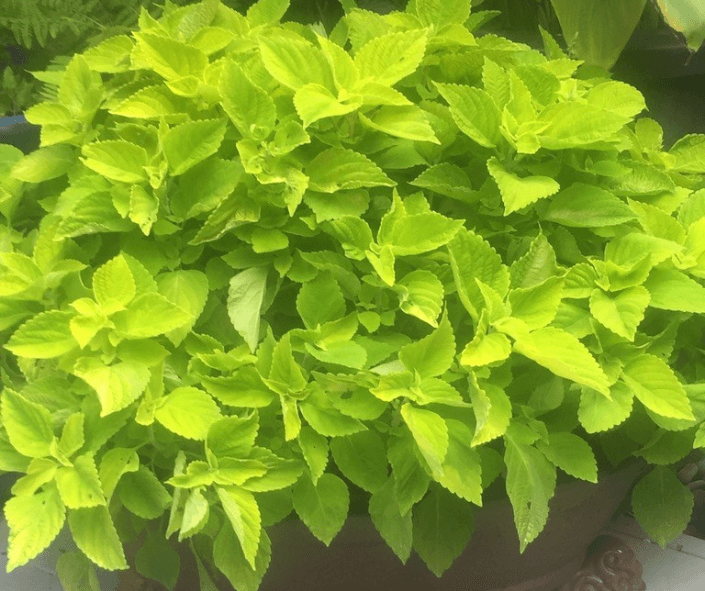
Long ago, Coleus had been considered a house plant. I can remember, my grandmother always had coleus growing in her house. It was a popular winter houseplant because the colorful leaves provided bright spots of color during the long Midwest winter months. Only occasionally were plants planted outdoors during the summer. My, how the times have changed!
Today, coleus varieties have been developed to be sun tolerant and the leaf colors, shapes, and plant habits are widely diverse. While coleus is technically a tender perennial down south, for most of us they are grown as summer annuals and provide wonderful leaf color throughout the season. The plants need warm weather to thrive and cannot withstand frost, but from late spring until the first frost of fall, they look lovely.
Selecting Coleus
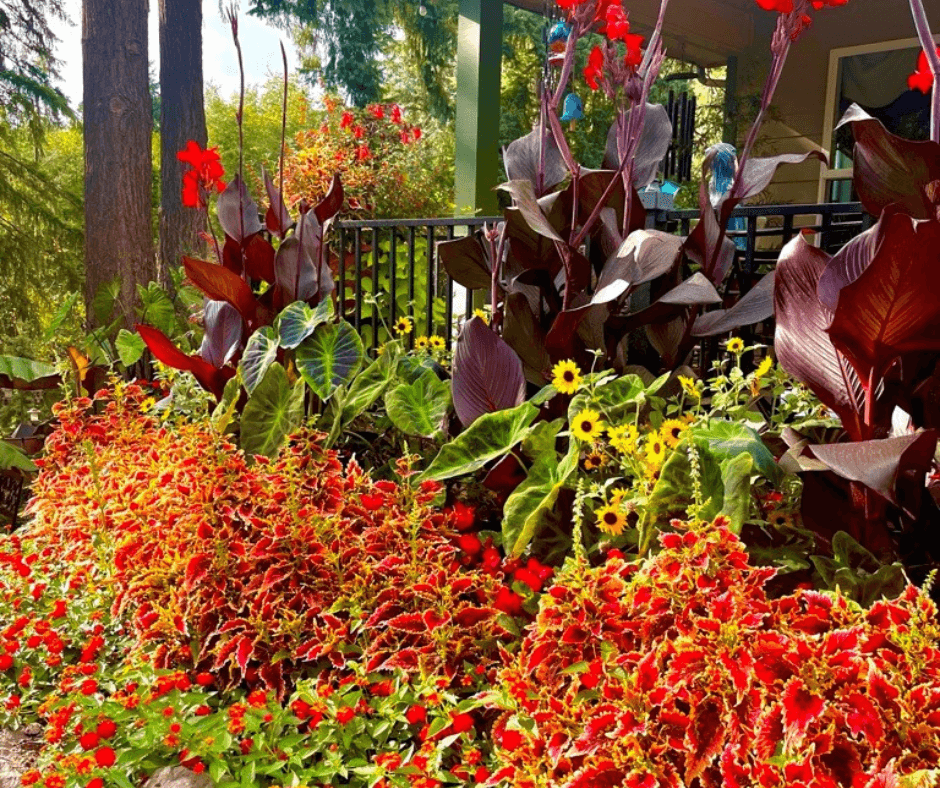
When selecting garden coleus, a good rule is to set them out at the same time tomatoes are planted. Both coleus and tomatoes need warm weather, and cold weather can stunt or kill plants if set out too early. Even though some new coleus selections have been developed as sun-loving coleus, I have found most perform better in my garden with some afternoon shade.
Coleus are ideal in both the garden and containers. More compact varieties make superb container plants with their colorful foliage throughout the summer season, such as the new compact, red, purple, and green Coleus ‘Spitfire’. Another I have grown both in a container and the garden is Proven Winner’s showy, ColorBlaze® El Brighto, with its brilliant fringed leaves of red, purple, and gold. (Click here to admire more of Proven Winner’s Colorblaze Coleus.)
Whatever coleus I choose, my potting mix of choice is Black Gold Natural & Organic Potting Mix. It holds moisture well and also provides for good drainage. I add an organic fertilizer at the time of planting and mix it well into the potting mix.
Planting Coleus
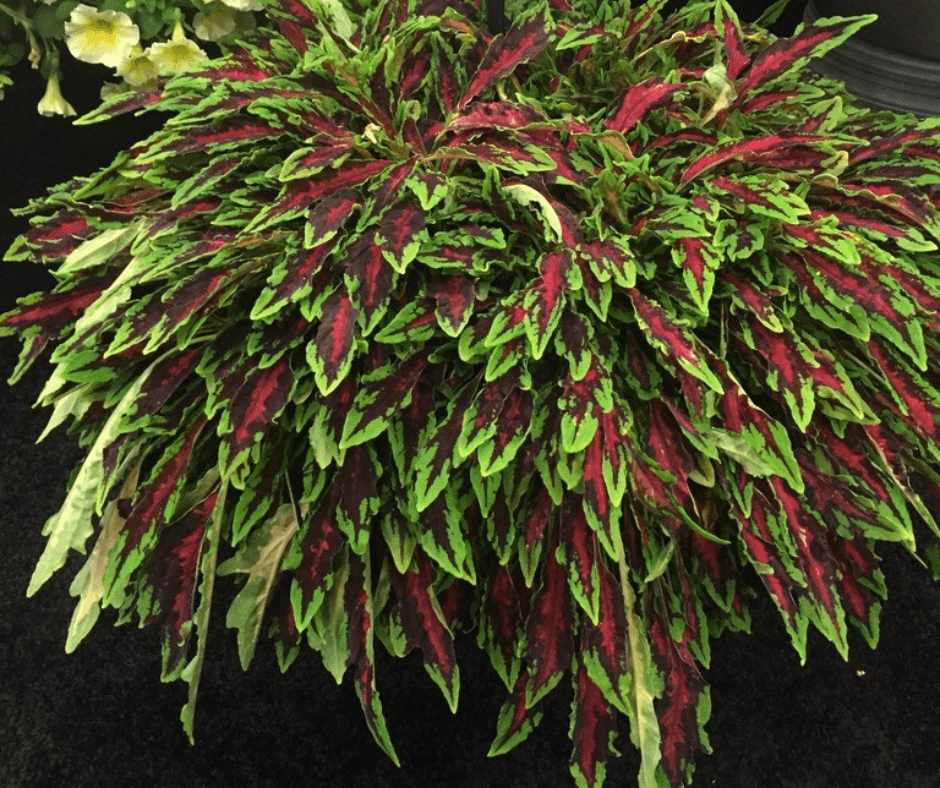
When setting out and growing coleus plants, it is a good idea to pinch the tips of the stems often to encourage a compact growth habit and encourage branching. Sometimes plants will send up spikes of white or lavender flowers. Even though bees like them, coleus foliage looks best if you pinch off the buds before they bloom. Pinching will stop flowering and encourage the plant to produce new colorful growth rather than flowers and seeds.
Sometimes one color plant can create a nice ‘pop’ of color. Last year I planted Coleus ‘Campfire’ with its amber-orange foliage, and it stood out nicely against a background of green (image below). Another bold coleus with only one color is Proven Winner’s Lime Time, which provides a beautiful display of chartreuse leaf color and is especially nice in a shady area. It mixes well with ferns in a woodland setting,
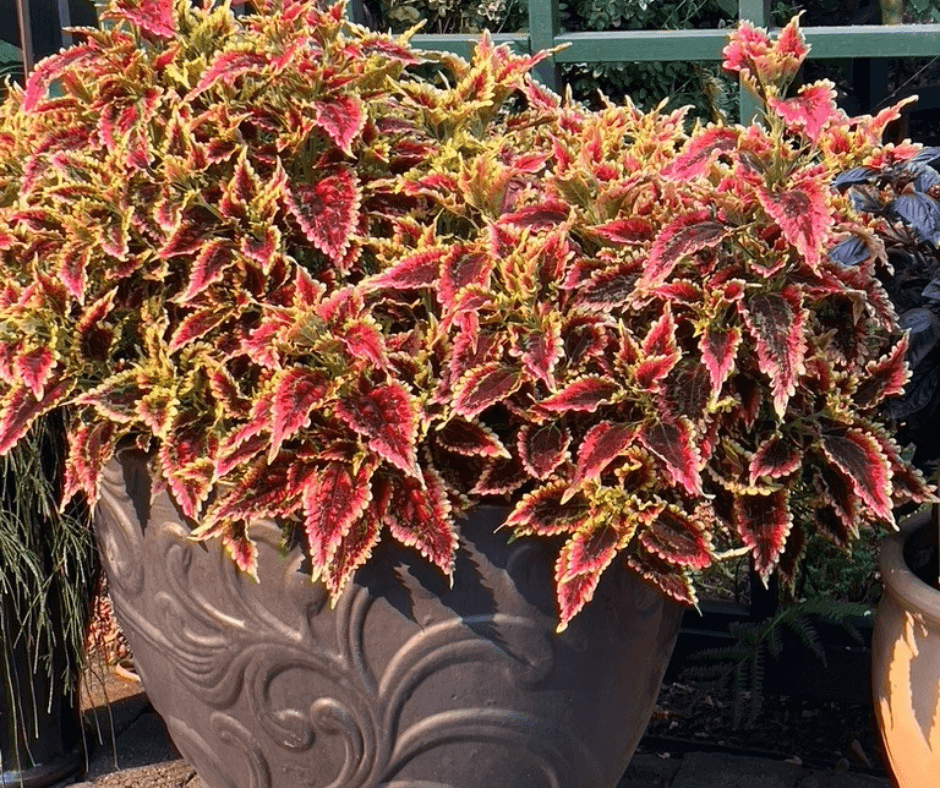
Last summer, I saw a pot of Coleus Spitfire in a garden and was impressed. The variety has a unique layering growth habit as well as brightly colored leaves. It looked beautiful in the container and would work equally well in a hanging basket or a garden edge.
Caring For Coleus at Season’s End
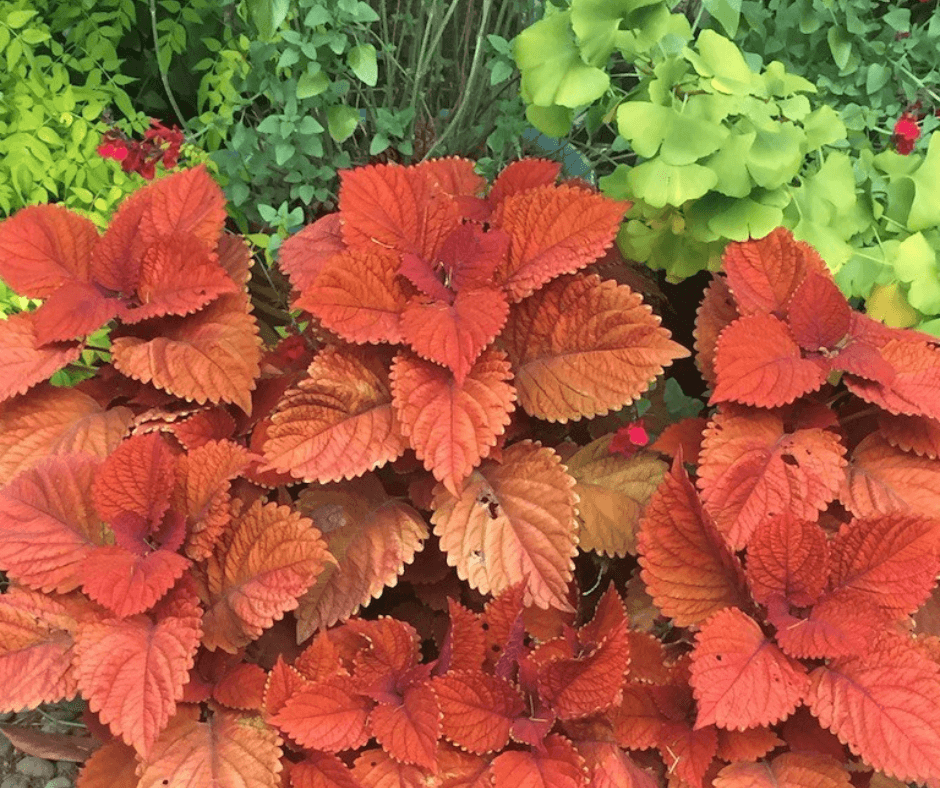
As the summer season ends consider overwintering a coleus. You can either take a cutting to pot up or transplant the larger specimen. They root easily in water and once rooted, can be planted in a small pot and kept by a window for necessary light. (Click here for video details on how to take cuttings.) The plants will probably have to be pinched often as they reach for light, but they are easy to keep over and then planted outside in the spring.
The selection of color combinations is vast and every year there are new forms on the market. Some dwarf types have small leaves and only grow up to about 12 inches. Then there is the Kong series with leaves reaching up to 8 inches in length! If you have not checked out the coleus section at your local garden center, you will be surprised at the diversity of leaf colors and shapes that are available.
